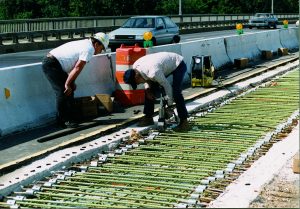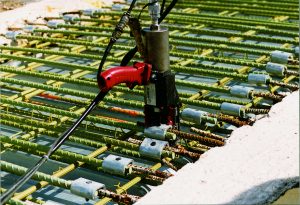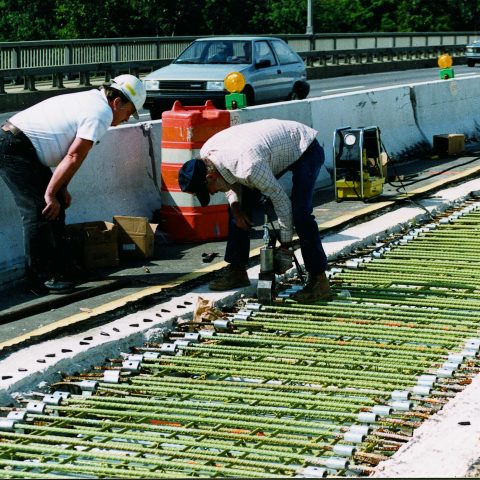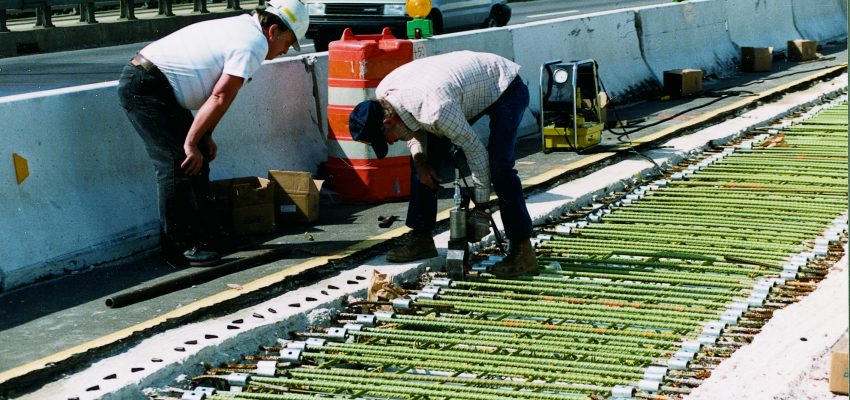The Theodore Roosevelt Memorial Bridge was constructed in the 1960s. It is one of six bridges that crosses the Potomac River and services traffic between Washington D.C. and Arlington, VA. It needed to be expanded to accommodate traffic. A reversible lane was added to allow for improved traffic flow during rush hour by switching directions with dominant traffic.

The rebar subcontractor suggested using the nVent LENTON Quick Wedge splicing system to reduce the time required to join new epoxy-coated rebar with existing steel dowels and complete construction of the reversible lane. Because the Quick Wedge system works with short dowels, less concrete removal is necessary, which saves time and money.

The system also eliminates the need to custom cut and fit rebar to precise measurements as is necessary in butt-splicing. By using Quick Wedge, the contractors could use standard-length rebar, a cost and time savings on the project.
The new reversible lane was constructed in the former median space of the bridge. Concrete was removed to expose two layers of short dowels to receive the new rebar. Contractors connected the existing steel dowels to the new rebar by positioning the Quick Wedge sleeve around the two overlapping steel bars. They then inserted the wedge pin and used a hand-held hydraulic tool to drive the pin.
A two-man splicing crew averaged between 500 and 600 connections in an eight-hour period, ultimately securing thousands of splices along the 3,100-foot expanse.
See more details about the nVent LENTON Quick Wedge system here.


